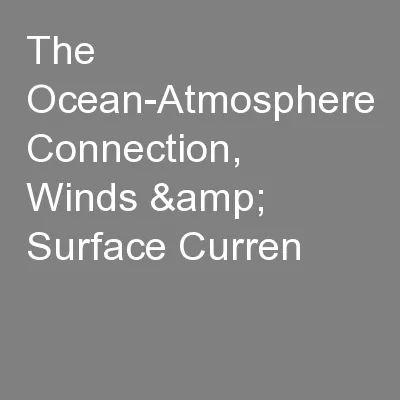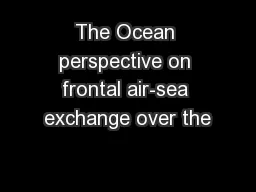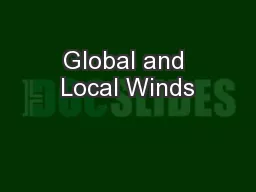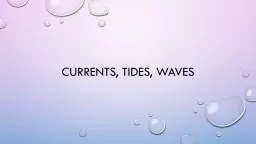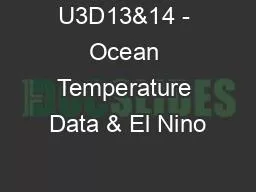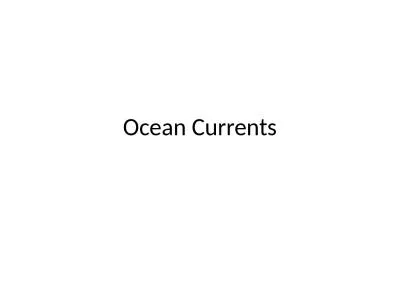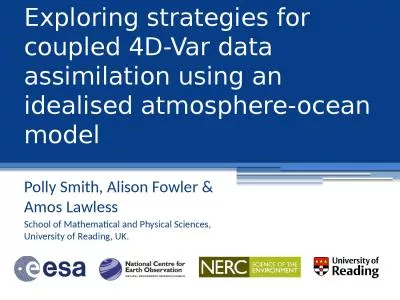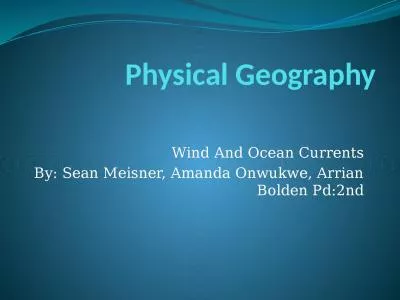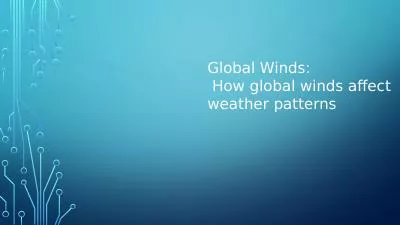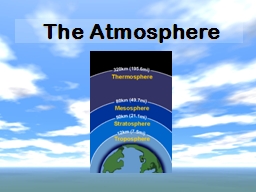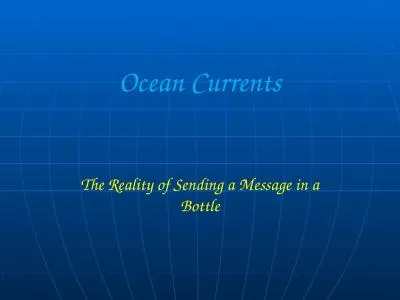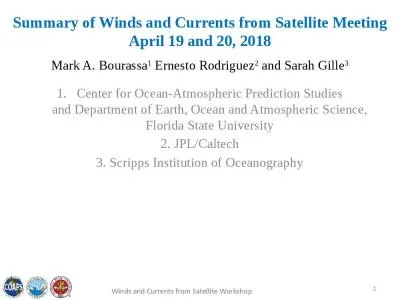PPT-The Ocean-Atmosphere Connection, Winds & Surface Curren
Author : lindy-dunigan | Published Date : 2016-10-13
Geosc040 Lecture 9 Feb9 2016 Somewhere Beyond The Sea Sinatra Ocean Avenue Yellowcard Thanks to Caitlyn N and Alexandra B Thermohaline circulation Online
Presentation Embed Code
Download Presentation
Download Presentation The PPT/PDF document "The Ocean-Atmosphere Connection, Winds &..." is the property of its rightful owner. Permission is granted to download and print the materials on this website for personal, non-commercial use only, and to display it on your personal computer provided you do not modify the materials and that you retain all copyright notices contained in the materials. By downloading content from our website, you accept the terms of this agreement.
The Ocean-Atmosphere Connection, Winds & Surface Curren: Transcript
Geosc040 Lecture 9 Feb9 2016 Somewhere Beyond The Sea Sinatra Ocean Avenue Yellowcard Thanks to Caitlyn N and Alexandra B Thermohaline circulation Online Assignments 4 amp 5 . Early ocean studies. For much of human history, knowledge of the ocean and its currents was not recorded for many reasons - most sailors could not write and information was passed orally.. European nations began systematic ocean explorations but kept information secret between the 15. Redux. The separated Gulf Stream (GS) is one of the ocean ‘hot spots’ for heat and water loss to the atmosphere. Under this area of enhanced surface exchange, the ocean responds by altering its stratification and forming a water mass with deep winter mixed layers of up to 500m thickness. In the North Atlantic Ocean, this subtropical mode water is called Eighteen Degree Water (EDW). Data indicate that frontal processes are important in EDW formation: much like atmospheric convection can be affected by atmospheric frontal dynamics that does not exist in a simple 1-D atmospheric boundary layer response to heating from below. i. What causes wind? . Caused by a difference in air pressure due to. unequal heating of the atmosphere.. Winds are created by. ….. • . Heating the air, decreases pressure (warm. air rises creating a low pressure). Ecology is the scientific study . of:. interactions . between organisms and the environment. . It is the study of the interactions . between: . different . groups of organisms. . It is the study of the interactions between:. Created by Winds. Coriolis Effect- The shifting of ocean currents and surface winds from their expected paths caused by the rotation of the earth. Gulf Steam – ocean current in the northern Atlantic ocean, brings warm water from Africa to the Americas. U3D13 – Bell Ringer – 12/14. Short Answer Practice: Cloud Formation. Fill in the blanks of the explanation using the word bank:. Cloud, condenses, dew point, rise, humidity, expand, condensation nuclei, pressure. Category 5? typical gusts over open flat land of more than 280km/h. These winds correspond to the highest category on the Beaufort Scale. Extremely dangerous with widespread destruction. One of the For much of human history, knowledge of the ocean and its currents was not recorded for many reasons - most sailors could not write and information was passed orally.. European nations began systematic ocean explorations but kept information secret between the 15. Polly Smith, Alison . Fowler & Amos . Lawless. School of Mathematical and Physical . Sciences, . University of . Reading, UK.. Introduction (1). Typically, . initial conditions for coupled atmosphere-ocean model forecasts . By: Sean Meisner, Amanda Onwukwe, Arrian Bolden Pd:2nd. What Is Wind?. Wind: Is air moving across the surface of the Earth. Wind occurs because sunlight heats the earth’s atmosphere and surface unevenly.. Global . Winds. - A . current. is a flow of air or water in a certain direction.. Global . Winds. Winds move from areas of . high. pressure to . low. pressure.. You might expect them to move straight from the poles (high pressure) to the equator (low pressure)but…. . The layer of gases surrounding Earth; composed mainly of 78% nitrogen and 21% oxygen, and other gases (water vapor, dust, pollutants, etc.). Brainpop: . Earth’s atmosphere. Layers of the Atmosphere. Ocean Current Layers. Surface Currents. . – . top . 10% of the ocean; upper 400 m. Deep Currents . – lower 90% of the ocean. Properties . of . Ocean . Water . How they impact ocean currents. Temperature. April 19 and 20, 2018. Mark A. Bourassa. 1. Ernesto Rodriguez. 2. . and Sarah Gille. 3. Center for Ocean-Atmospheric Prediction Studies. and Department of Earth, Ocean and Atmospheric Science, Florida State University.
Download Document
Here is the link to download the presentation.
"The Ocean-Atmosphere Connection, Winds & Surface Curren"The content belongs to its owner. You may download and print it for personal use, without modification, and keep all copyright notices. By downloading, you agree to these terms.
Related Documents

